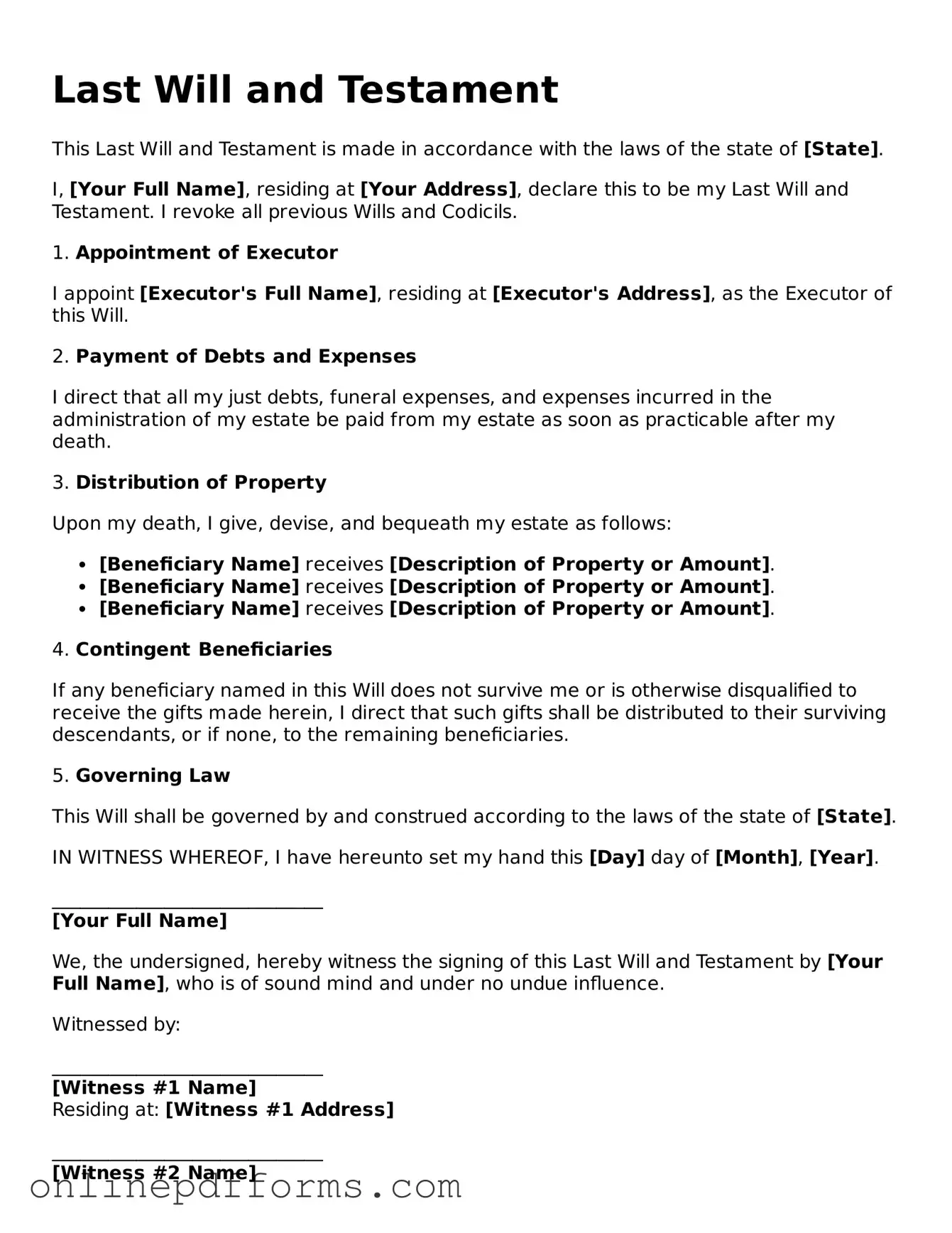The Last Will and Testament is often compared to a living will. A living will outlines an individual's preferences regarding medical treatment in situations where they cannot communicate their wishes. Both documents serve to express a person's desires about their future, but while a Last Will deals with the distribution of assets after death, a living will focuses on healthcare decisions during life.
Another document similar to a Last Will is the trust. A trust allows a person to place their assets in a legal entity that can manage those assets for the benefit of others. Like a will, a trust can dictate how and when assets are distributed. However, a trust can take effect during a person’s lifetime and can help avoid probate, while a Last Will only takes effect after death.
Power of attorney is also akin to a Last Will. This document grants someone the authority to make decisions on behalf of another person, particularly in financial or legal matters. While a Last Will comes into play after death, a power of attorney is active during a person’s life, allowing for immediate decision-making when the individual is unable to do so.
A healthcare proxy is another document that serves a purpose similar to that of a Last Will. This document designates someone to make medical decisions on behalf of an individual if they become incapacitated. Both documents ensure that a person’s wishes are respected, but the healthcare proxy specifically addresses medical care rather than the distribution of assets.
Living trusts share similarities with Last Wills as well. A living trust is created during a person's lifetime and can be altered as needed. It allows for the management of assets and can provide for their distribution upon death. Unlike a Last Will, which requires probate, a living trust can help streamline the transfer of assets to beneficiaries.
Another related document is a codicil. A codicil is an amendment to an existing Last Will and Testament. It allows individuals to make changes without drafting an entirely new will. Both documents must adhere to specific legal requirements, and a codicil ensures that any updates to a will are legally binding.
A letter of instruction can also be compared to a Last Will. This informal document provides additional guidance to loved ones about personal wishes and practical matters. While a Last Will is a legal document that dictates asset distribution, a letter of instruction can cover anything from funeral preferences to how to handle personal belongings.
Joint wills are similar to Last Wills in that they are created by two individuals, often spouses, to outline their wishes regarding asset distribution. Unlike separate wills, a joint will can simplify the process for couples but may also limit flexibility for changes in the future, as both parties must agree on amendments.
Lastly, a disclaimer of interest can relate to a Last Will. This document allows a beneficiary to refuse an inheritance, which can affect how assets are distributed. Both documents play a role in the transfer of assets, but a disclaimer is a way for individuals to opt out of receiving something they may not want.
